Quick verdict: There's no doubt the Toyota LandCruiser 300 series is a joy to drive, offering comfort, power, reliability and luxury on all surfaces. However, it fails to be the ultimate family all-rounder due to its compromised middle row and aggressive feature tiering.
Pros
- Fantastic driving experience on all surfaces
- Incredible and accessible power
- Luxury feel to interior finishes
- Huge boot
- Solid warranty and capped servicing
Cons
- Super expensive and long waitlist
- Middle row is space compromised
- Fuel economy poor for daily errands
- Stock features portioned into higher models
- No 8-seater or manual variants
To say the Toyota LandCruiser 300 series has been anticipated would be an understatement. In the works for 14 years, such is the demand for the vehicle that at times new buyers have faced up to an 18-month waitlist. Sure, COVID hasn't helped manufacturing, but there's clearly a serious passion for Toyota's flagship 4WD Down Under.
Australia's love affair with the LandCruiser dates back to the 1950s and its respect is well earned. In a country of extremes, it's the LandCruiser that has consistently and reliably powered through all the terrain that we've chucked at it, even if it's towing a huge caravan or boat on the way. The LandCruiser is the indestructible bar to which all other 4WDs are measured.
My personal history with the LandCruiser dates back to 1988, when my father bought a brand-spanker 60-series. He eventually rolled it dramatically with the entire family in the back and we all survived with minor wounds. I still remember the attending police officer saying, "any other car and you'd all be dead". Respect.
During my adult years I've always wanted a LandCruiser, but have never had the means. I've had plenty of friends who have, and driven a lot of them. They've always been fit-for-purpose kings of the family 4WD space – even if the V8 petrol era was too heavy handed at the bowser.
When I got behind the wheel of the new LandCruiser 300 Sahara ZX I was excited to say the least. In many ways the car delivered on my dreams. But I'd be lying if I said it didn't let me down as well.
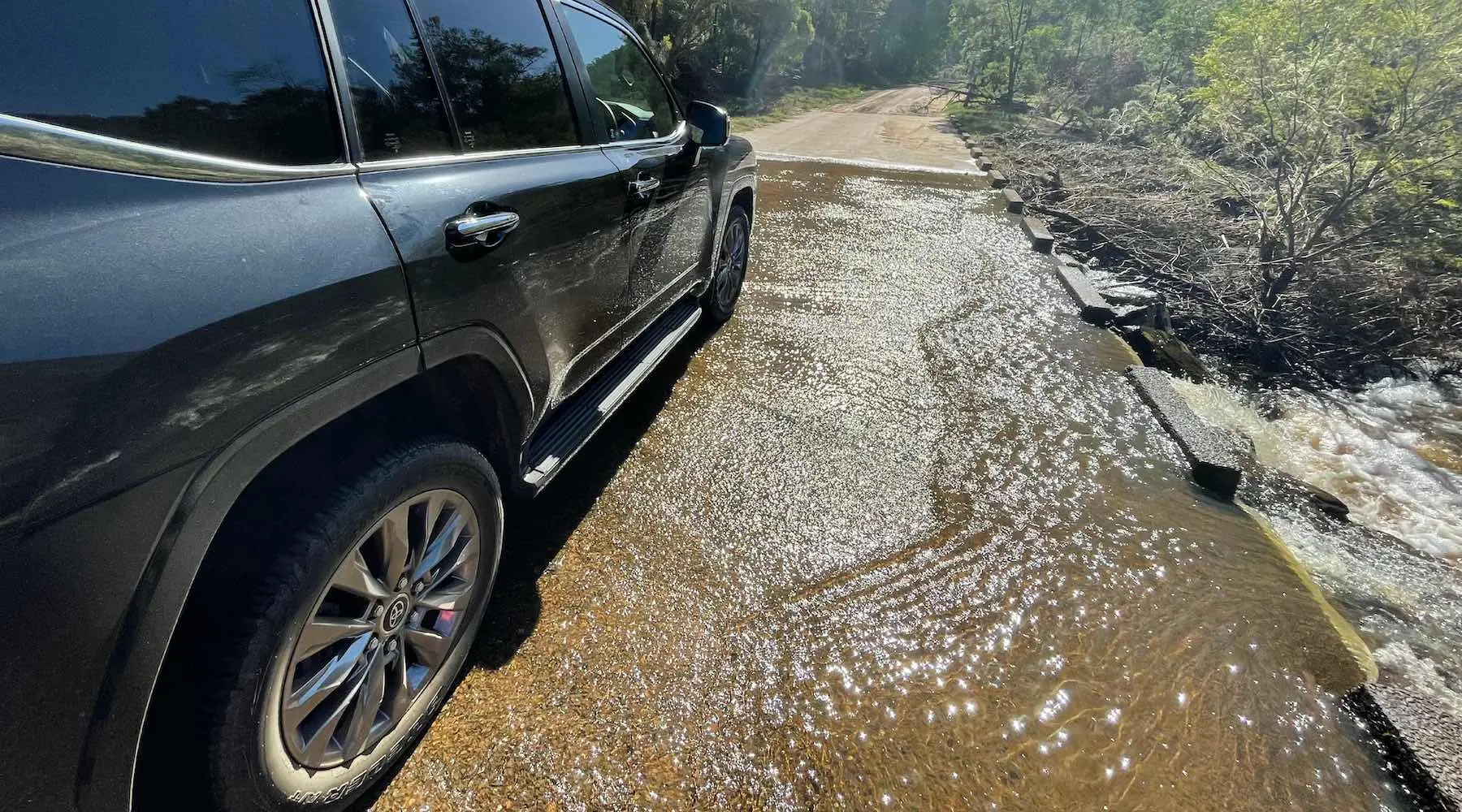
How long is the LandCruiser waitlist in Australia?
While technically available right now, as mentioned, wait times to get delivery on your LandCruiser 300 series 4WD can be substantial. It has fluctuated a bit, depending on the model and has improved as manufacturing rebounds during the global recovery from COVID. Toyota readjusted its wait time in February 2022 to 8 months on average, with the higher end models being the most likely to blow out from that.
How much is the LandCruiser 300 series?
There are 6 models this time around for the LandCruiser 300. This includes 2 new high-end models in the GR Sport and the Sahara ZX. It's the latter I was lucky enough to drive, which comes with all the bling you can imagine. Below you will find a table of each model's prices, which are driveaway prices from the official Toyota website as of March 2022. These are higher priced than what was mentioned when the LandCruiser 300 first appeared by close to $10,000 each. Sigh!
| Model | Price | Seats |
|---|---|---|
| GX | $97,216 | 5 |
| GXL | $109,606 | 7 |
| VX | $122,618 | 7 |
| SAHARA | $140,678 | 7 |
| GR SPORT | $147,608 | 5 |
| SAHARA ZX | $148,658 | 5 |
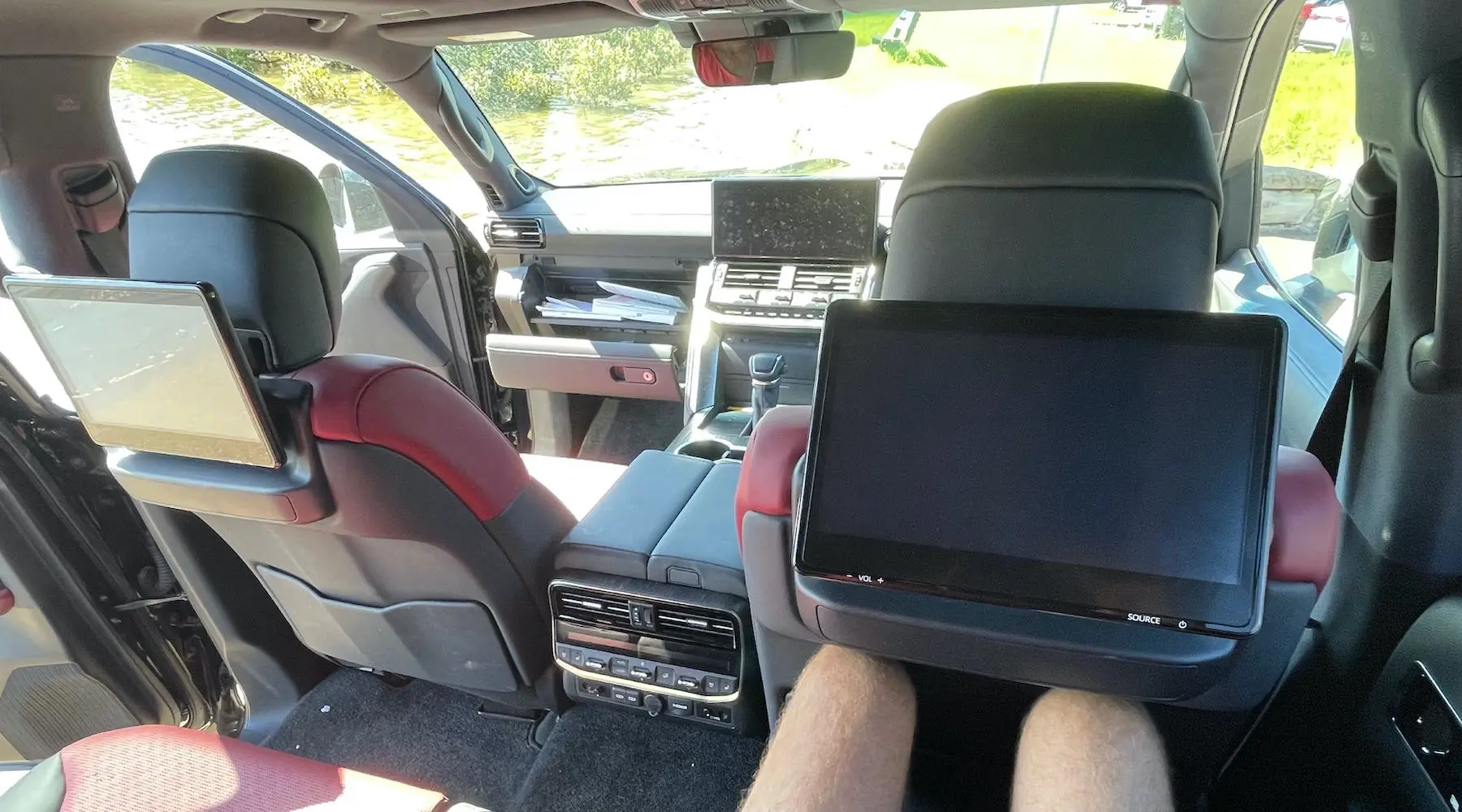
LandCruiser 300 features and specifications
There have been some significant changes under the hood with the LandCruiser 300 series. And as I will go into when we talk about performance, those who think that it needed a V8 to be great, will eat their words. Here are the top line stats:
- Engine: 3.3L twin-turbo V6 diesel
- Output: 227kW@4000rpm / 700Nm@1600-2600rpm
- Transmission: 10-speed dual shift automatic
- Drive type: 4WD (High and Low)
- Wheels: 20" 265/55
- ANCAP: 5 stars
- Weight: 2.5 tonnes
- Official fuel economy: 8.9L/100km
- Fuel capacity: 110L
- Seats: 5 or 7
- Decibel at idle: 47
- Warranty: 5 years (7 years for engine and driveline)
- Services: 5 years capped at $375
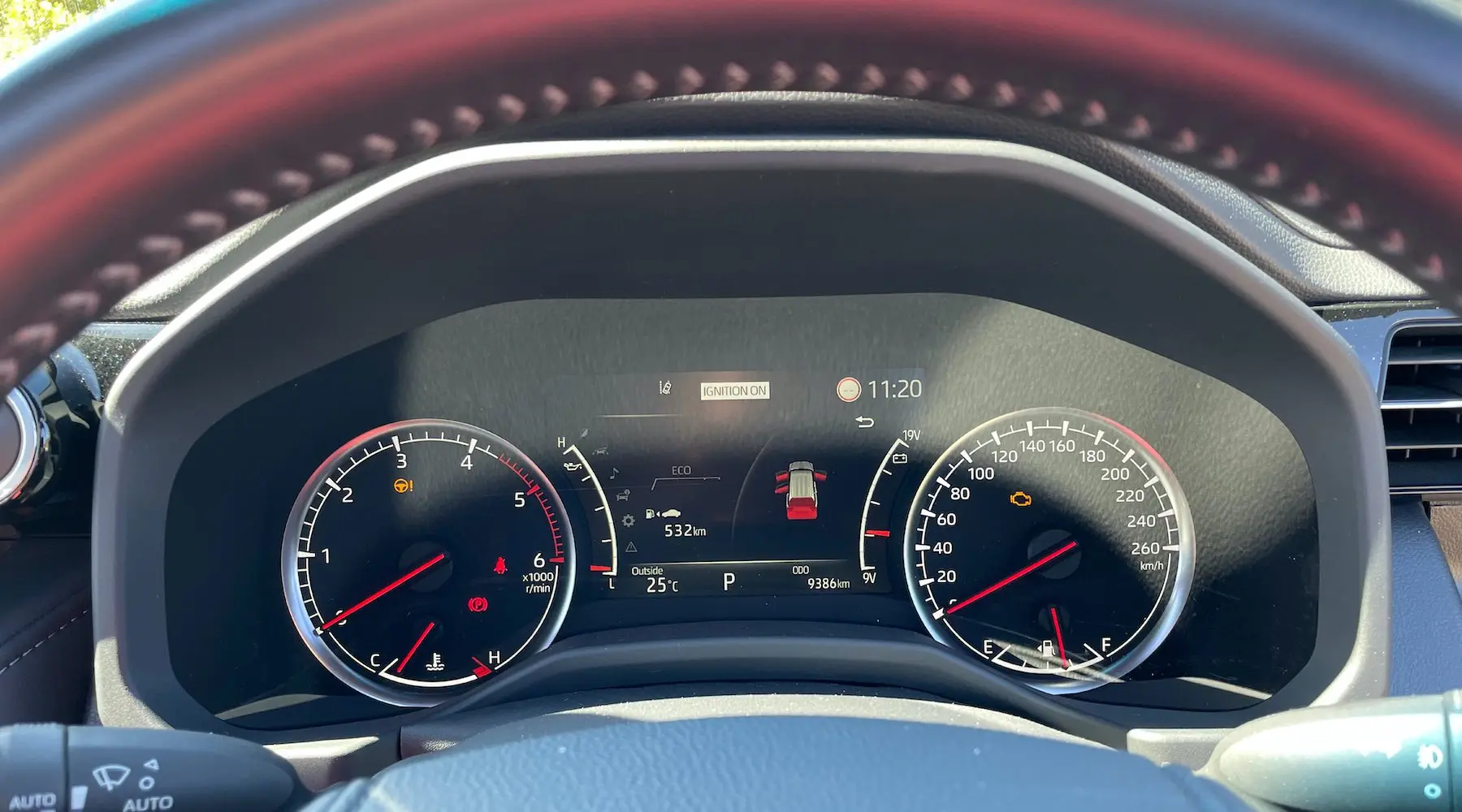
External design
While similar in footprint and weight to the 200 series that preceded it, you can tell at a glance that the LandCruiser 300 range is another beast. The aesthetic is clearly different, taking on what I would call a more American look. It's less rounded and boxier.
Looks are such a subjective element so my thoughts on the matter probably shouldn't hold much weight. But for what it's worth, I like the look of the car front-on and slightly to the side. The big mean grill, front lighting and contoured bonnet look boss. And it's worth noting that inside the car you still sit high above the front end, so the bonnet doesn't encroach on visibility, even with smaller humans in the passenger seat.
Looked at from the back in any direction I consider it to be less attractive. It looks top heavy, overly thin – despite being slightly wider than the 200 series – and generic. At least the rear end now has an upwards opening door across all models. This is much more user friendly for not only access and sealing the car against dust, but in providing a handy rain shelter.
Less easy to notice at a glance is the lower centre of gravity and the stronger yet lighter aluminium shell and steel in the chassis. Plus the increased ground clearance, which in the Sahara ZX benefits from the 20" wheels.
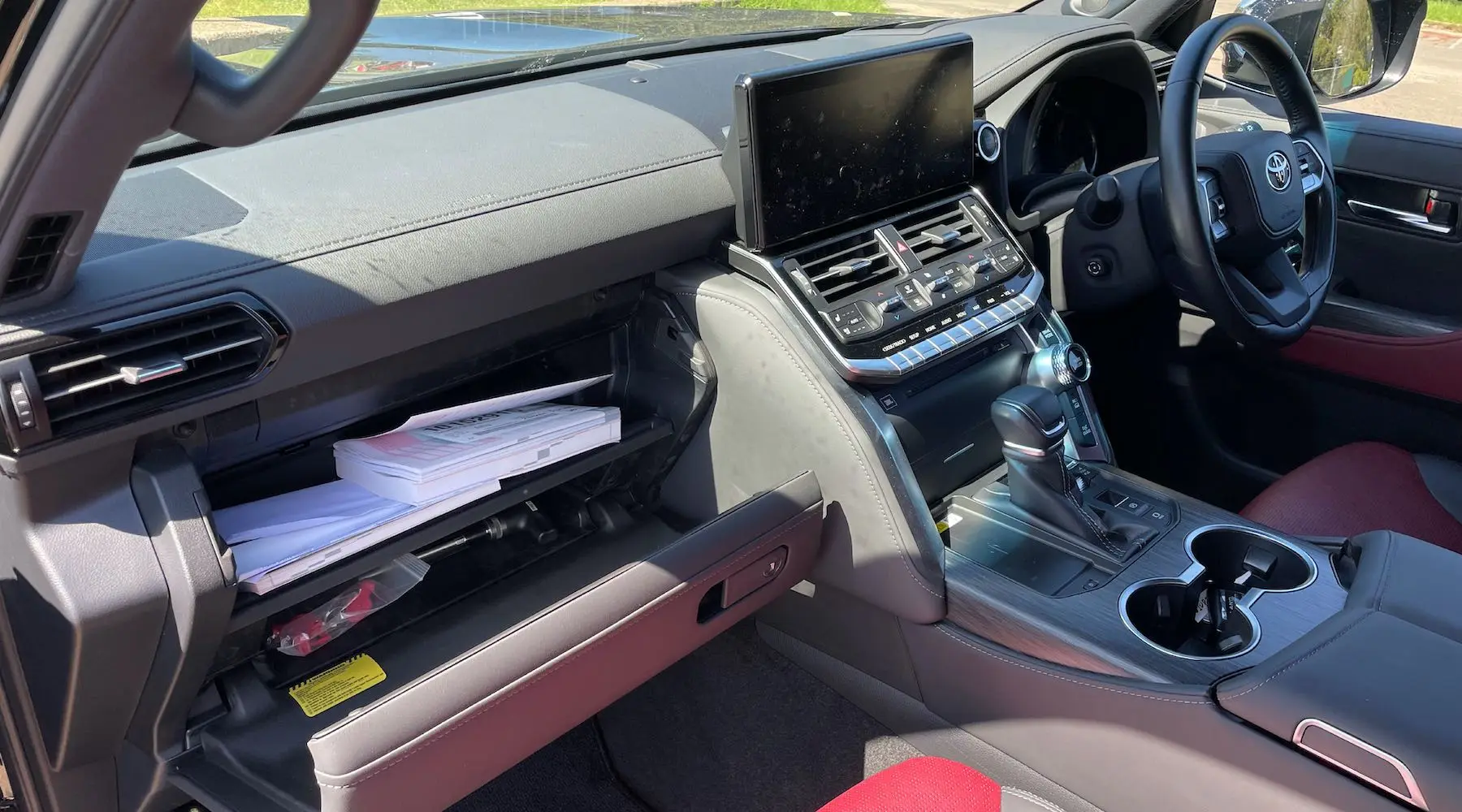
Interior design
In general, I'm a big fan of the inside finishes of the LandCruiser 300 series. The dashboard is brilliant. I love the fact that all your day-to-day functions not only get their own analogue buttons, but an ergonomic concave design that tackles your finger and elegantly wrestles them into place. The same can be said for all the buttons and toggles, be they in your door or on the steering wheel.
I'm also a fan of the old-school analogue speedometer and tachometer on the dash behind the wheel. You still get a digital speed and rev display flashed up on the windscreen, but the main information HUD keeps it retro.
The multimedia screen, which is 9" in the GX and GXL but 12.3" in the other models, looks futuristic and slick in the way it pokes up above the dashboard. The operating system is great, too. It's just smartly done so you can work out how to get to where you want to and the information you need through logic, rather than heading to the manual or YouTube to work it out.
The Sahara and Sahara ZX also get back screens that mimic those we see in recent airplanes. They provide solid visuals, even if the sources are limited by a lack of Chromecast or USB-A. And they're buoyed by truly fantastic speakers. Sometimes it feels like being in a cinema!
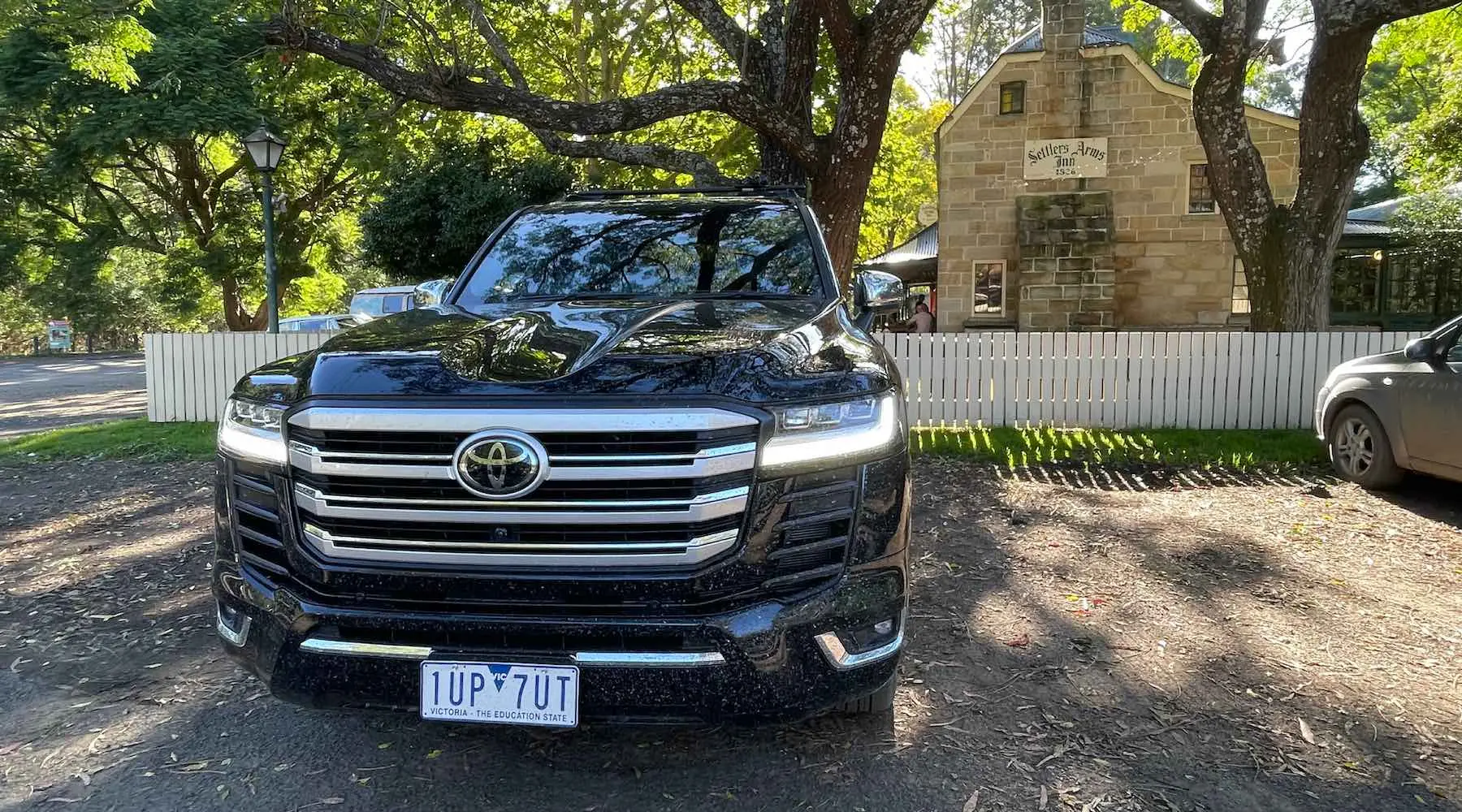
Luxury
There's no shortage of cup holders, glass holders, nooks and crannies, as well as USB-C ports galore. USB-A ports are a little harder to come by, with just 1 up front in the Sahara ZX. The glove box is humungous, but the centre console is decidedly smaller if you have the cool box found in the Sahara, Sahara ZX and GR Sport. As its name suggests, this does keep your drinks ice cold, but the compromise is space if you want to use it as traditional storage.
I love that all but the GX model have NFC charging for phones; it's a super handy feature. And also, that there is a 240V plug in the rear to go with the standard 12V (cigarette lighter) port. But the fact you must operate Apple CarPlay and Android Auto in wired mode means you're still stuck with cables around your gearstick. How retro; where's the wireless? I just stick with Bluetooth as a result.
Ultimately, the LandCruiser 300 series does feel luxurious. Especially in the higher models, it feels like every feature you can think of is on hand. Speakers everywhere, 3 driver seat memory presets, heated seats, large screens… I could go on for a while!
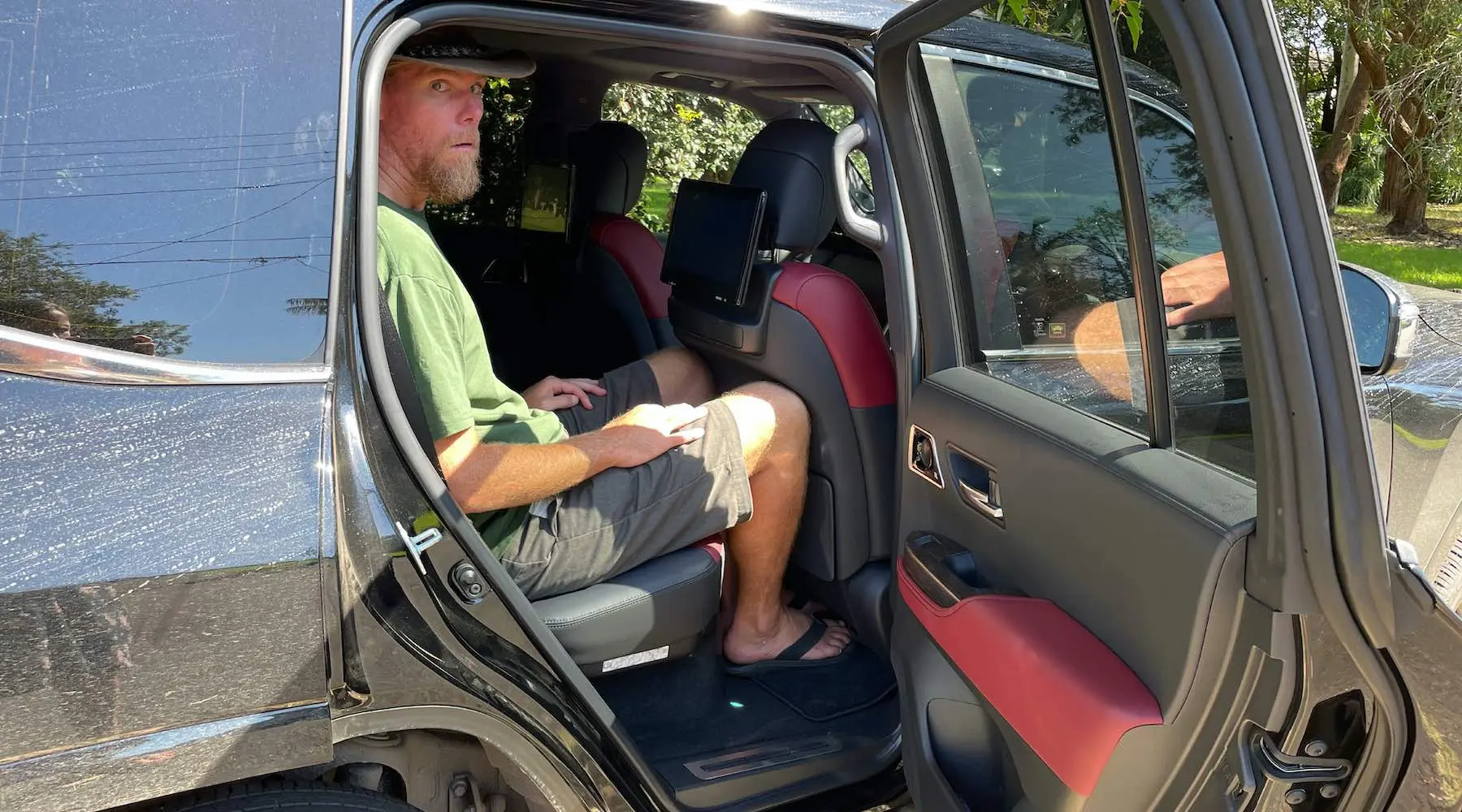
Seating and space
Maybe I'm missing something, but for a car this size, I really didn't expect to feel compromised in the middle row with space. But for a car that's supposed to be the be all and end all for Australian families, the LandCruiser 300 series is too tight in my opinion.
Yes, I'm a big bloke. I'm 194cm. But I don't have the car seat all the way back when I drive. Regardless, I would expect an adult-sized human – which includes kids aged 15 and over – to be able to sit comfortably behind me in a LandCruiser 300 when I'm driving. This is not the case.
It's not a height issue as my head doesn't touch the ceiling. It's a width issue. Your knees are jammed in, plus the floor height is such that there is no support under your thighs. Was this a car built by Oompa Loompas? This problem doesn't just extend to being able to take your older kids and their friends in your car, let alone other adults. It impacts baby capsules and kid seats, too. Unless you're a family under 6-foot in height, I think you're going to come into issues on long drives. Or worse, your family will just outgrow it.
That's just not good enough, especially as I don't have such issues in the older Kluger and Prado models, or the new Fortuner model which I recently reviewed. If I'm going to spend this kind of money on a family car, I'm expecting it to get me through a decade, if not decades. The LandCruiser 300 series will struggle to do that where other 4WDs won't.
No 8-seater?
The seats themselves also aren't the most luxurious going around. Maybe that is somewhat by design as they need to hold up in the rugged outdoors. But even in the Sahara ZX, which is 1 of only 3 models with leather (alongside Sahara and GR Sport), it doesn't have that super supple feel. They remain comfy, however.
I'm also not stoked about the drop from 8 to 7 seats, and then restricting 7 seats to just the base models. Especially given that the new system – whereby the rear seats go down into the flooring and not up against the windows – makes those extra seats so much more user-friendly.
At least the boot is humungous. You can almost do star jumps in there.
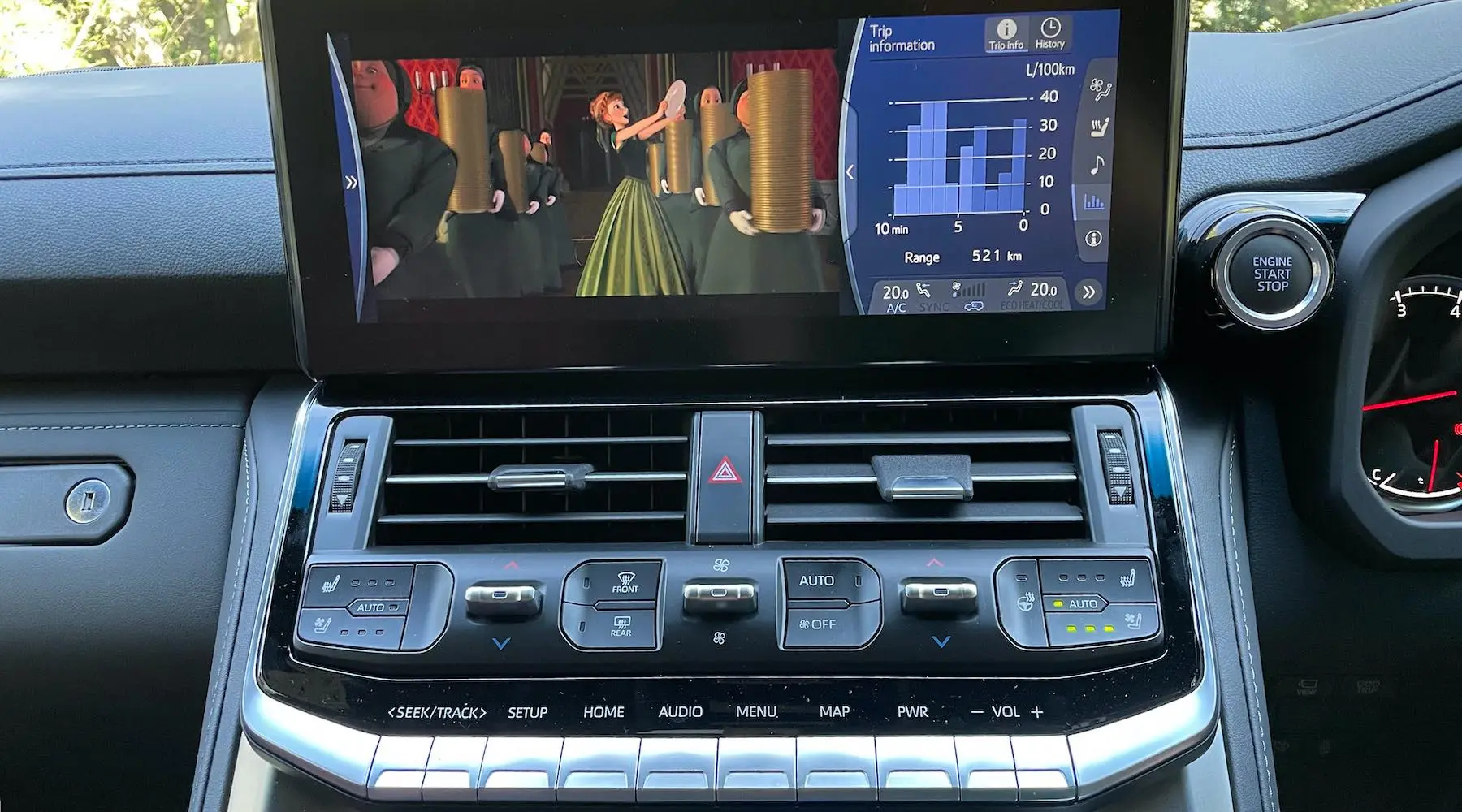
Restricting features
It's not unusual for car manufacturers like Toyota to lock out features on base models to give consumers FOMO on pricier tiers. However, with the LandCruiser 300 series, I feel like Toyota has been too aggressive. Ultimately, we must remember that the base GX model is still going to set you back $98,000. That's $30,000 over what's considered "luxury" by the ATO.
I think if you're spending that much money, some things should simply be standard – especially when they come in cars half the price. Powered boot opening, full size multi-informational display screen, lumber adjustment in driver's seat, wireless Android Auto and Apple CarPlay, rear parking sensors and satellite navigation. These kinds of things should be standard at that price. I'd argue even leather seats. But they're not, so look very closely at the variances between the models to make sure you're getting the features you know you'll use a lot.
While I'm blowing off some steam, I still don't understand why the multimedia services only get updated for 3 years. Does Toyota not realise how much it's charging for these cars? It's a damn firmware update, how hard can it be? It should be lifetime.
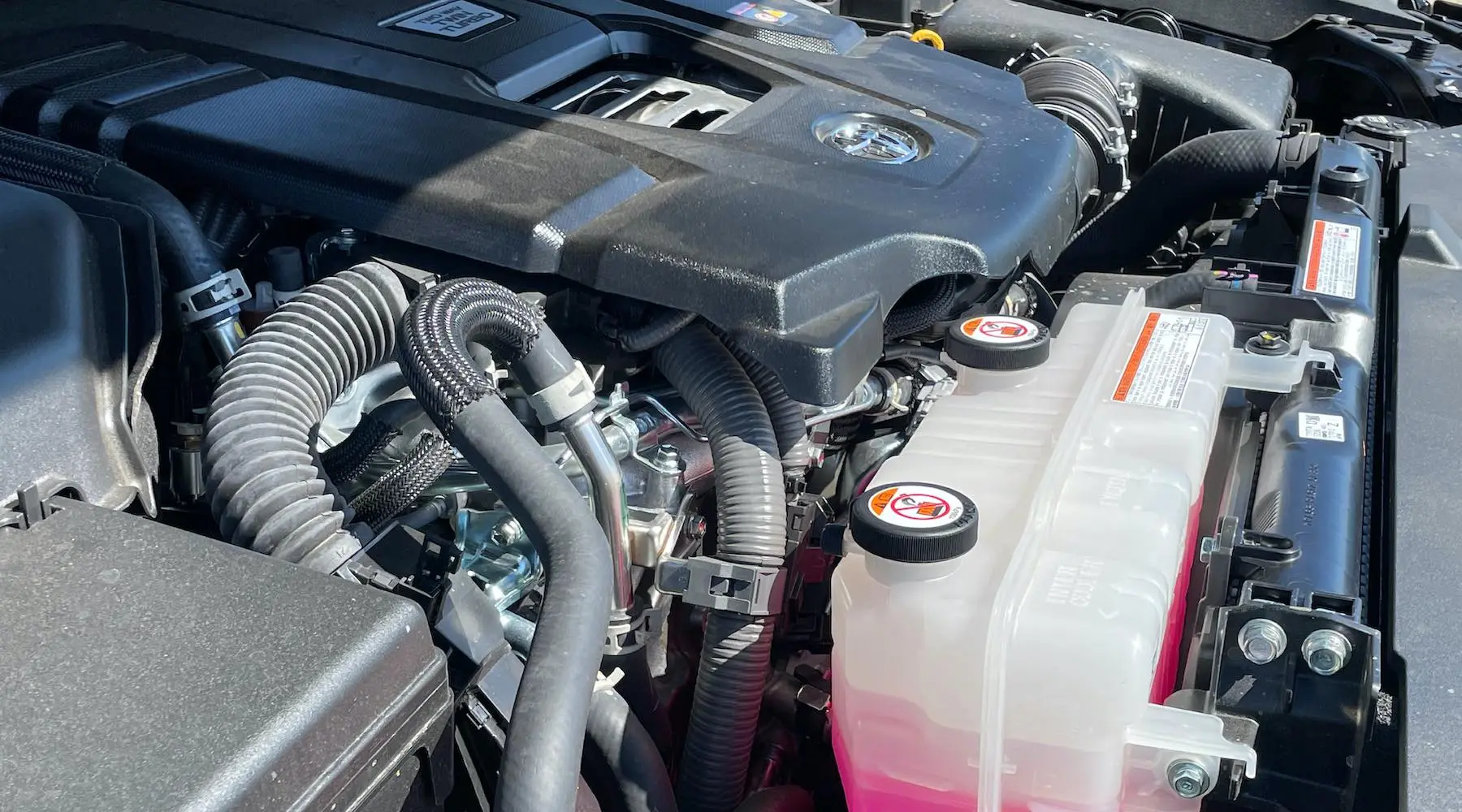
Performance
One thing you can't argue about with the LandCruiser 300 series is the driving experience. It's comfortable, responsive, powerful and generally just amazing on all surfaces. There are 5 drive modes in the Sahara ZX and GR Sport (3 in the others), which you can notice mostly in how aggressive it is with the gear changes. But they all still have plenty of boot up hills.
Indeed, in the places I tested this car, I ran out of slope before I ran out of kick. The LandCruiser 300 takes off with far more zip than you might expect from a car of this size, but you can feel its power in all situations. There's might to it, even when getting over tricky terrain while pulling a 3.5-tonne caravan. The 10-speed transmission is seamless to the point where you'll struggle to pick up gear changes.
Indeed, the car always seems to be sitting happily under 2,000 revs, no matter what you're doing. You always have torque in hand. I loved driving this car.
Zigging and zagging down tight mountain roads, the body roll is minimal, while the suspension eats up the bumps and ruts with ease, sending very little impact through to the occupants – even when hit at speed. The turning circle is good, too, and visibility is excellent. Also, I was surprised by how unobtrusive the sound is when you're in the cabin.
That lovely diesel engine rumble is omnipresent, but it's suitably muffled and the wheels don't add any aural discomfort of their own either.
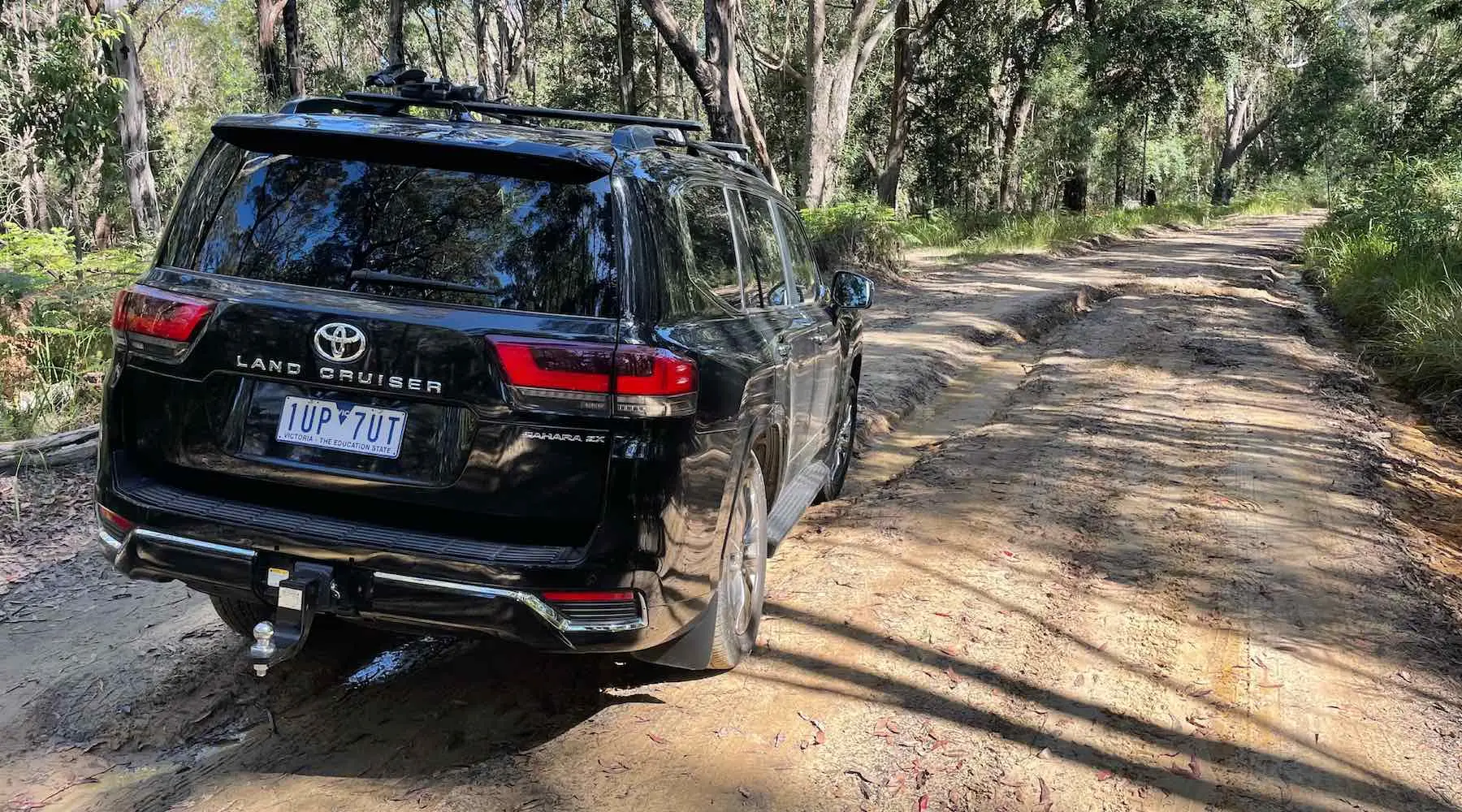
4WD assists
I'm not going to go through all the off-road assists, other than to say that they're easy to toggle and behave as you'd expect. Switching between low and high 4WD is seamless; you can centre diff lock on all models. There's multi-terrain select, downhill assist control and more, with the multimedia screen giving you a good read on how everything is behaving.
It's a bit odd the way the diffs are handled, with full, independent front and rear diff lock support only in the GR Sport model. Rear limited-slip diff locks do exist in the Sahara ZX. That's likely to frustrate a number of Aussies, I fear. But what I can't cop at all is the lack of a manual option anywhere across the range. Fair dinkum? That's un-Australian.
LandCruiser 300 fuel economy
As mentioned at the top, the LandCruisers haven't always been famous for their fuel economy. Some, notably the V8 petrol variant, have been worse for the environment than Trump. So, how does the LandCruiser 300 series go for fuel economy? It's solid, if unspectacular in the wake of the hybrid era.
For a car this size, as you might expect, using it to zip around doing daily tasks – dropping kids to school, doing the shopping, heading down to the dog park, kids sport, etc – is taxing. You can expect 18L/100km or worse. Commuting does a bit better as you spend a bit longer cruising over distance. You can expect to get around 14L/100km in traffic, or closer to 10L/100km if you're not driving in peak hour.
Once you get on the highway, things get a lot better. Sitting on 110km on the Pacific Highway, you'll sneak well under 10, even nudging as low as 8L/100km. With that in mind, and given the 110L fuel capacity (80L main tank, 30L supplementary), you should easily get past the 1,000km mark between stops – which is Sydney to Melbourne, or Brisbane to Sydney, easy as.
Of course, all that changes when you put a heavy trailer on the back. It can tow 750kg unbraked, or 3,500kg braked. Depending on where you are on those figures and the headwind, it can guzzle with the best of them.
Overall, these results are comparable with my 2013 Kluger, despite being a bigger and heavier car. However, the far better grunt means the LandCruiser does a lot better towing a heavy load than the Kluger.
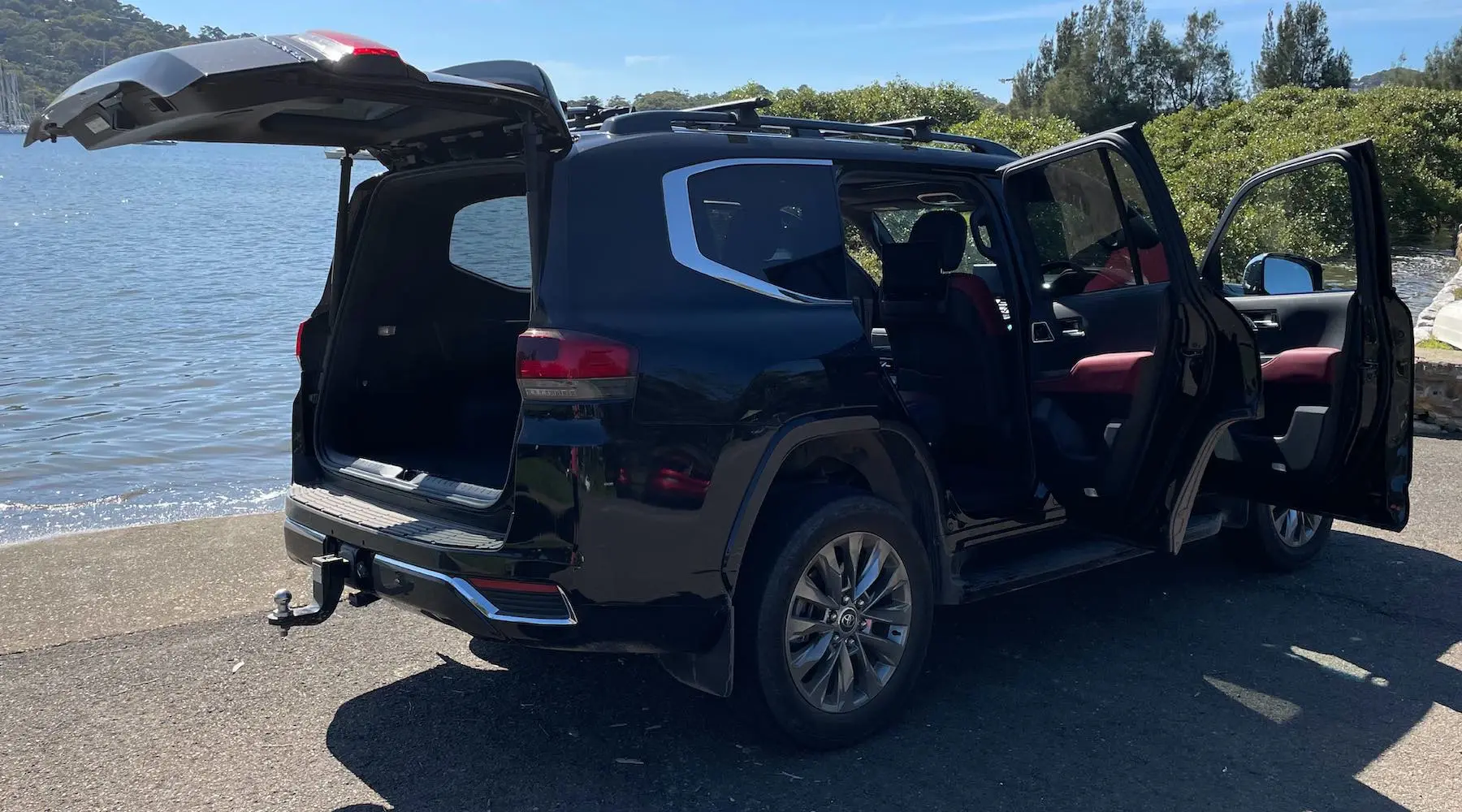
Safety
You'll rarely feel as protected as you do in a LandCruiser 300, simply thanks to the scale of the car. You are the biggest dog on the road in most instances, after all. This is a 5-star ANCAP rated vehicle, with the Toyota Safety Sense suite of feature. Thankfully a reversing camera is on all models, as are 10 SRS airbags and ISOFIX anchor points. There are even curtain airbags in the third row where applicable.
But the lower tier models get jibbed on a few safety features, which I think is pretty poor form at this price. The likes of lane trace assist, rear parking support brake, parking sensors, blind spot monitor and rear cross traffic alerts don't make the cut for the GX and, in some cases, GXL.
The actual experience of driving with the various assist on is fine. I'm not a fan of assists personally; I don't want my steering wheel suddenly pulling at me. But most of the safety features are passive in this regard and not overly aggressive in their implementation.
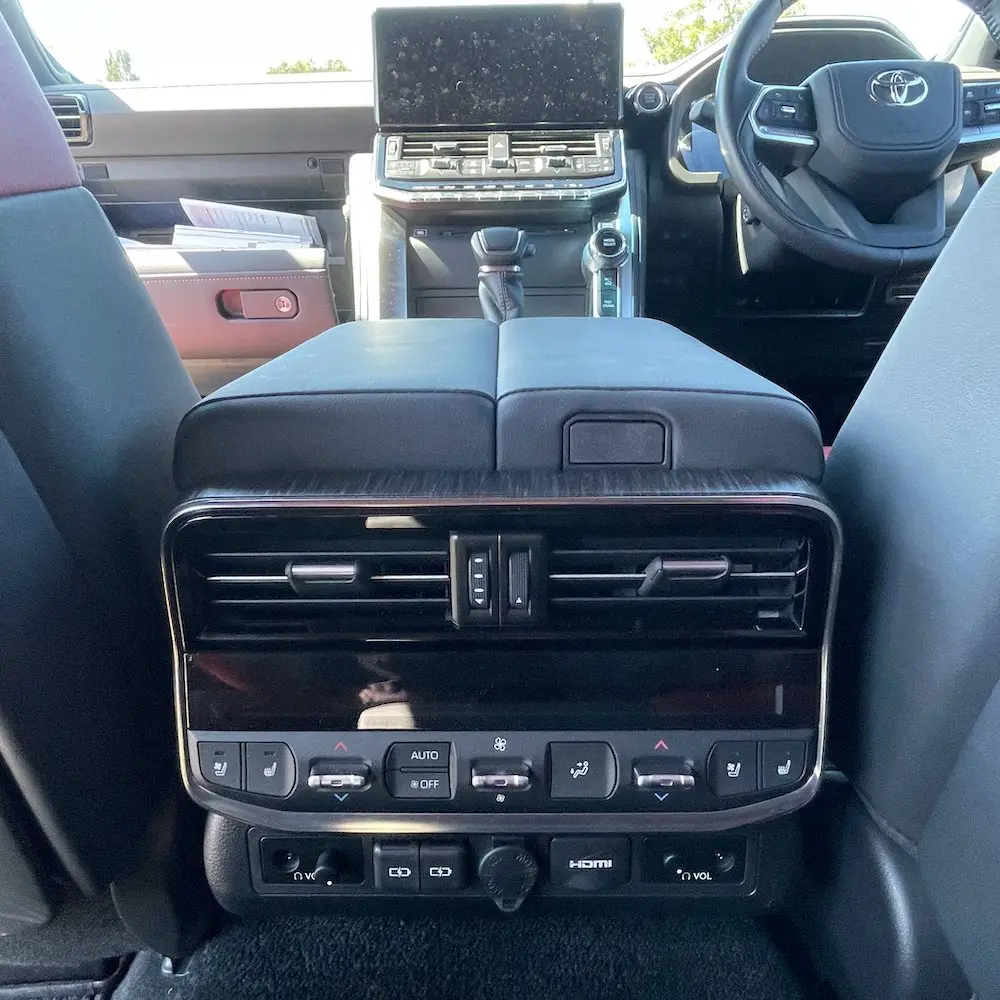
Verdict
Whether you're driving in the city, the highway or anywhere in this country's vast array of off-road regions, the LandCruiser 300 series – and in particular the Sahara ZX – is a luxury drive. It just feels amazing in your hands and under your feet. Power on demand, yet nuanced enough to be delicate and precise when required. It lets you explore with confidence and control.
Yet I've got major question marks about its design. Ditching manual as an option, and bringing it down to a maximum of 7 seats, but 5 in much of the range, sits askew from the Aussie dream the LandCruiser represented. I also think that the middle row is too compromised on space to suit the needs for medium to tall families long term. It's a struggle with kids seats and baby capsules stacked in, and then tall teenagers or adults at the other end of the spectrum.
The tiering of features between the models also seems too aggressive given the base price. Even with the GX, you're paying a house deposit for a car that doesn't have basic features like sat nav and a powered boot.
It means that the LandCruiser 300 series isn't the perfect allrounder that's great for everyone, as it has been in years past. Instead, there are key demographics – namely large families – that will find they've been left by the wayside. As a tall man with 3 kids, each of whom could very soon be pushing my dimensions, I won't consider the LandCruiser 300 as a result.
Which is a shame, because I absolutely loved driving it.
PS: While testing this car, I stumbled on its 1968 predecessor. They've definitely come a long way.
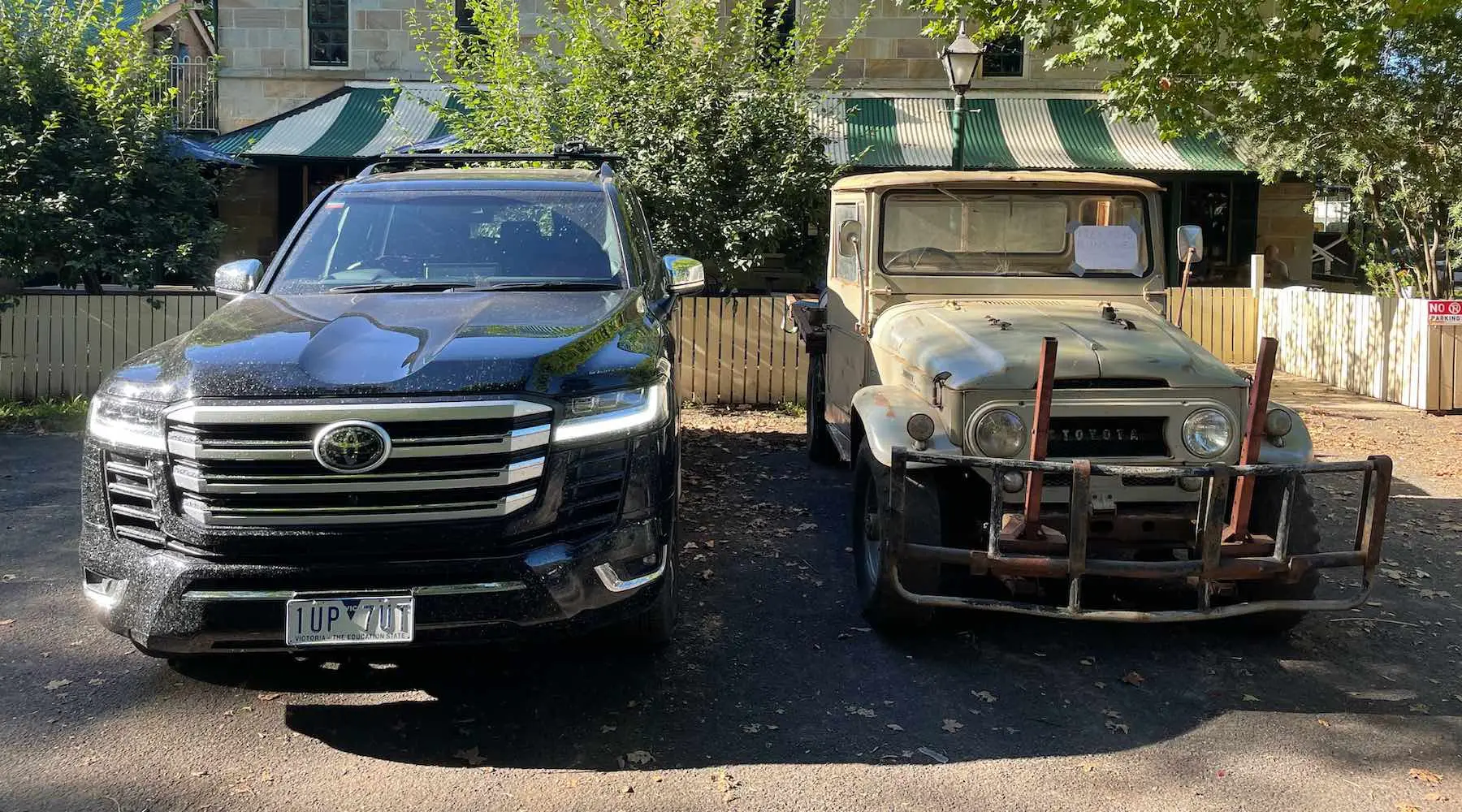
More guides on Finder Shopping
-
Hyundai Ioniq 5 N Review
The future’s electric – and it wants to burn rubber
-
2025 Genesis G70 Review
It's faster than a BMW 3 Series, more unique than a Mercedes C-Class and loaded with features that make it feel every bit as premium.
-
Volkswagen Golf Mk8.5: More tech, more power, more excuses to upgrade?
The VW Golf is back - and it's got more of everything.
-
Sharper, smarter and better value: The 2025 Skoda Octavia RS lands in Australia
Skoda refines its family-friendly performance car with more features, more power and a competitive price.
-
2024 Peugeot E-Expert Van Review
Peugeot have made a van that whispers while it works.
-
2024 Toyota GR Corolla review
Toyota gave a Corolla muscles and a megaphone and it’s glorious.
-
2024 Jeep Wrangler Review
Born for the trail, adapted for the tarmac
-
SUV reviews
Let us assist you in picking your next SUV.
-
Best small cars
There are dozens of different makes and models to choose from and then about five different trim levels on average, per carmaker. This guide will help you cut through the sales banter.
-
Electric Car Reviews 2025
Which electric car should you buy in 2021? Find out with our complete EV guide.
